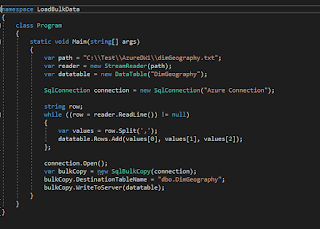PowerPivot in Excel 2013
Man O man!!!! I have recently started playing around with Office 2013 and I love it. It has a lot more facets that make regular excel user's lives easier. But this post is about an issue of using PowerPivot in Excel 2013. I started opening existing PowerPivot workbooks (created in Excel 2010) in Excel 2013 and whenever I navigated to the PowerPivot ribbon, all the options were always disabled. I thought for a second that there might have been a problem with the installation and I might have missed an option while installing Office 2013. But then barring the fact that Visio 2013 is still a seperate installation, there was absolutely no problem with my Office 2013 installation. Then I tried reopening the workbooks in Excel 2010 to just verify that these were not corrupted in any fashion and thank the gods above!!! they weren't. So that got me thinking that the consumer preview of Office 2013 might not have PowerPivot enabled. Was just about to ping someone in the Office team when a post by Jason Volpe caught my eye..... It seems that PowerPivot for Excel 2010 and 2013 are two different add-ins. I probably would never have guessed this. So to enable PowerPivot in Office 2013....just follow the steps in Jason's post as mentioned in the URL below:
http://www.jasonvolpe.com/2012/07/how-to-activate-powerpivot-in-excel-2013/
I am now in the process of evaluating PowerView in Office 2013 (oh yeah!!! No longer only integrated with SharePoint) making it easier for offline users to create powerful visualizations with PowerPivot data.
So when you try and open a PowerPivot workbook (from 2010) without a pivot table or a pivot chart in it, you might run into a couple of issues with Excel 2013. Save the PowerPivot workbook (in 2010) with a Pivot chart or Pivot table in the workbook and the migration will be successful. The next issue while creating a Power View dashboard within 2013 might lead to a memory exception the first time. Close all the instances of Office 2013 and then open Excel 2013. Create a PowerPivot and a Pivot table or chart associated with the same or open an existing PowerPivot workbook. (Prior to this ensure that Microsoft PowerPivot for Office 2013 and PowerView is checked as shown in the screenshot below)
After this when you click on the Power View option it will take a while for the Power View to jet start but once it does ......... lets get ready to Ruuuuuuuuumble!!!!!!!
http://www.jasonvolpe.com/2012/07/how-to-activate-powerpivot-in-excel-2013/
I am now in the process of evaluating PowerView in Office 2013 (oh yeah!!! No longer only integrated with SharePoint) making it easier for offline users to create powerful visualizations with PowerPivot data.
So when you try and open a PowerPivot workbook (from 2010) without a pivot table or a pivot chart in it, you might run into a couple of issues with Excel 2013. Save the PowerPivot workbook (in 2010) with a Pivot chart or Pivot table in the workbook and the migration will be successful. The next issue while creating a Power View dashboard within 2013 might lead to a memory exception the first time. Close all the instances of Office 2013 and then open Excel 2013. Create a PowerPivot and a Pivot table or chart associated with the same or open an existing PowerPivot workbook. (Prior to this ensure that Microsoft PowerPivot for Office 2013 and PowerView is checked as shown in the screenshot below)
After this when you click on the Power View option it will take a while for the Power View to jet start but once it does ......... lets get ready to Ruuuuuuuuumble!!!!!!!




Comments